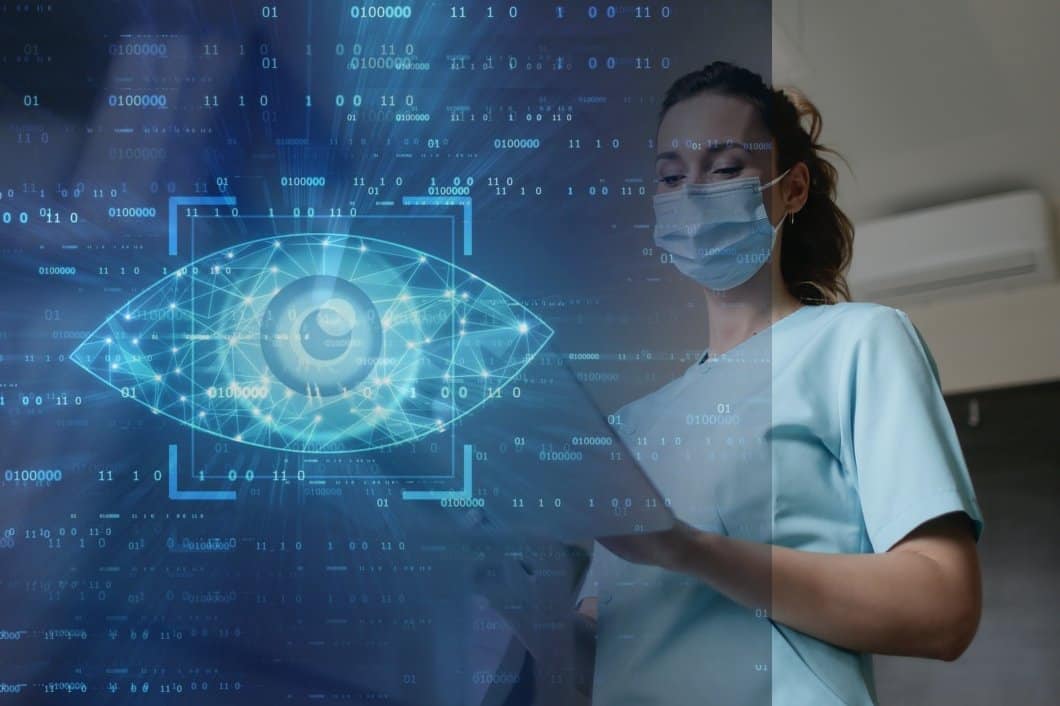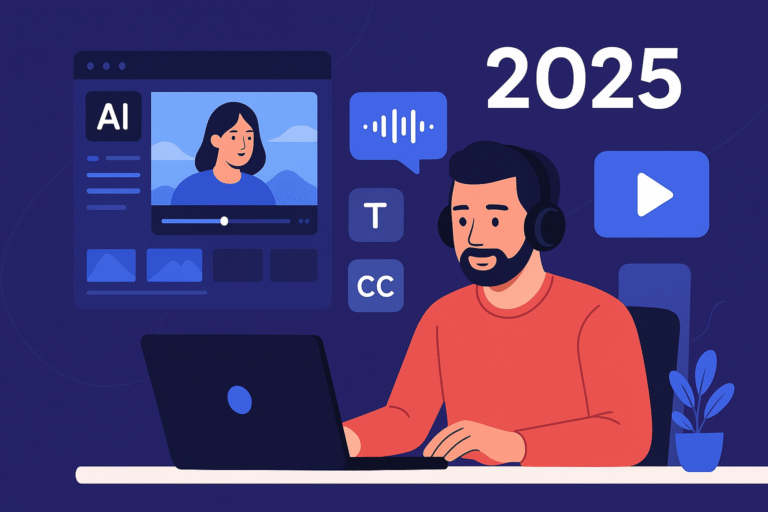The health care industry is undergoing an unprecedented revolution in technology, with major advances in artificial intelligence and computer vision leading the way. Computer vision allows machines to read, process, and analyze data from visual sources (such as images, scans, and video) that were formally reliant solely on human expertise. From radiology to pathology to remote patient monitoring, computer vision is enabling doctors, researchers, and hospitals to provide care that is faster, safer, and more accurate, and which can be individualized to each patient.
For hospitals, clinics, and life sciences organizations that want to implement AI into their processes of care, partnering with a trusted Computer Vision Development Company means gaining the expertise required to design and scale solutions for complex and sensitive – and regulated – health care environments. This type of partnership has allowed for the development of precisely accurate diagnostic tools, improvement of workflow/human efficiency, and saving of lives. The use cases in health care to date illustrate the legitimate capacity of AI to redesign clinical practice and affect medical outcomes. In fact, partnering with a Computer Vision Development service provider means that a health care organization can employ the latest computer vision technologies that are also compliant with important privacy regulations, such as HIPAA and GDPR.
The Role of Computer Vision in Modern Healthcare
Present-day healthcare systems are facing significant issues—such as the increasing demand for diagnostic services and the request of greater accuracy in clinical decision-making. Computer vision is responding to these challenges by providing inputs, such as image interpretation, anomaly detection, and clinical decision support, based on certain findings in a given body of knowledge. All varieties of medical devices with cameras and large algorithmic capabilities are interpreting images or data from X-rays to endoscopy videos, and are allowing doctors to consult the medical apparatus and the computer vision algorithm against clinical decisions they plan to take.
Computer vision serves to increase the efficiency and reliability of healthcare practice by decreasing time to diagnosis, decreasing errors, and early prioritizing of healthcare personnel on tasks with lower levels of repetitiveness. Hospitals see it as increasing efficiency and reliability rather than an adjunct, must-have tool to digitally transform sustainably.
Why is Computer Vision Transforming Diagnostics?
The ability to diagnose is greatly influenced by visual data in the form of radiographs, laboratory samples, or dermatological images. Manually reviewing these items is labor intensive and can vary from expert to expert. However, by utilizing computer vision, it is possible to:
- Review thousands of images rapidly and with greater accuracy than clinicians.
- Provide decision support by learning from patterns detected in large datasets.
- Detects smaller abnormalities that may not be seen by the human eye.
- Utilize point-of-care diagnostics in remote or resource-limited areas.
These capabilities make the rapid adoption of computer vision in health systems a reality globally.
How Computer Vision Works in Healthcare?
Computer vision in health care uses AI algorithms, especially ones based on deep learning models, to analyze medical images.
- Data collection: Using medical imaging machines and patient monitoring devices, images or videos are collected.
- Preprocessing: Data is cleaned, anonymized, and standardized to eliminate variability, noise, and inconsistent brightness.
- Model Training: AI models are developed and trained against the large, labeled dataset where the annotations were completed by pathologists or radiologists to indicate where such anomalies exist.
- Inference: During deployment of new patient images to the hospital, the models will evaluate new data in real-time using the trained model.
Core Technologies Behind Computer Vision
Data, Imaging, and AI Integration
The performance of computer vision relies on a powerful trifecta of medical imaging capabilities, immense data storage capabilities, and advanced AI algorithms:
- Medical Imaging: CT scans, MRIs, ultrasounds, dermatoscopes, and ophthalmoscopes, serve as the raw data.
- AI Models: Convolutional neural networks (CNNs) and vision transformers are used to sensitivity the high-dimensional medical images.
- Integration Pipelines: Deployment pipelines connect vision models in hospitals to IT systems – enacting ease of workflow integration.
These collectively form the technological large infrastructure of AI-driven healthcare diagnostics.
Key Use Cases of Computer Vision in Healthcare
Medical Imaging and Radiology
In the field of medical imaging, radiology is one of the more promising opportunities for computer vision. AI systems can analyze scans of CT, MRI, and X-ray images for lesions, fractures, or internal bleeding with great accuracy. The ability to detect life-threatening diseases, such as cancer and cardiovascular disease, early and at scale reduces turnaround time in diagnosis and improves the provision of care in an increasingly urgent care environment.
Pathology and Histology
Computer vision has found application in the sector of pathology for the examination of microscopic images of tissues. For example, there are algorithms capable of identifying atypical cellular structures, grading tumors, and autonomously segmenting images to produce areas of interest for pathologists. By automating processes within the pathology lab, there will be less labor and more accurate and reproducible diagnoses in the histopathology lab.
Ophthalmology
In ophthalmology, vision-driven AI has been able to analyze fundus photography and OCT (Optical Coherence Tomography) scans for diagnoses of diseases such as glaucoma, diabetic retinopathy, macular degeneration, or cataracts, enabling more forms of automated analysis that will enable broader, earlier intervention- especially in populations without access to individuals specializing in eye care.
Dermatology
In dermatology, dermatologists use computer vision to detect melanomas and classifications of skin conditions through dermatoscopic images. Computer vision systems enhance the speed at which dermatologists can triage patients, particularly in telehealth scenarios where patients provide photos of their skin remotely for analysis with computer vision.
Surgical Assistance
Surgical robots that feature cameras and AI-enhanced vision systems provide surgeons with improved visual guidance with real-time capabilities. Such technologies will identify anatomical elements, monitor surgical tools, and limit damage to non-targeted normal tissue. Vision-based systems will thus increase the precision of surgical procedures and decrease the chance of complications.
Remote Patient Monitoring
The convergence of internet-of-things in healthcare and computer vision has strengthened remote monitoring systems. These include use of camera systems that monitor a patient’s movement, physical activity, or falls in the elderly. The combination of sensors, internet-of-things technologies, and vision technologies, contribute to continuous understanding of a patient’s condition. Internet of things technologies can also improve home-based rehabilitation by use of visual assessment of body posture or exercises for better outcomes.
Drug Discovery and Research
Computer vision is impacting research in the life sciences as well. Imaging technologies powered by AI can analyze structures at the scale of cells, the folding of proteins, or the interactions of drugs with cells. These developments allow drug discovery to move faster than drug evaluations in laboratories and allow scientists to simulate and test new molecules much faster.
Benefits of Computer Vision in Diagnostics
Improved Accuracy and Speed
Computer vision treats large amounts of medical imaging in a faster manner which can mitigate delays for urgent situations. Algorithms can achieve significant accuracy rates that at times even exceed that of human operators.
Decreased Human Errors
Utilizing human assessment can often result in variability. AI can reduce this variability by producing consistent output, across multiple instances, and reduce errors in diagnosis.
Costs Savings and Effectiveness
Automated diagnostic support not only decreases the administrative burden on medical professionals but also optimizes the utilization of resources. By catching pathology early, many costly complications can be avoided which ultimately decreases the cost of delivering healthcare overall.
Improved Patient Outcomes
Having a timely and accurate diagnosis certainly improves survival rates, leads to much better treatment therapy, and most importantly contributes significantly to patient experiences.
Future Trends in Healthcare Computer Vision
Integration with Robotics and IoT Devices
There is a greater focus within hospitals on taking advantage of robotics and the IoT to increase efficiency in operations and care. Integrating surgical robots with vision allows for enhanced outcomes, while IoT in healthcare can be used in cameras and wearables that will offer a continuous flow of insight into patients for care based on data.
Federated Learning for Safe Medical AI
Federated learning allows hospital systems to train their AI systems by sharing an AI model across decentralized datasets, without ever sharing the raw data on each individual patient, while also avoiding possible data-sharing violations. This can help advance the development of mainstream diagnostic tools and systems without the risk of violating patient privacy regulations.
Personalized Medicine Through Vision-Based Insight
In the future, diagnostic systems based on vision will enhance individualized treatments. We will almost certainly use imaging to identify the rare and unique markers of disease before forecasting the response to treatment so that patients receive care specifically designed for their unique disease manifestation and biological data.
Final Thoughts
Computer vision is more than a concept, it is coming into play in healthcare today. From radiology and dermatology to patient monitoring and drug discovery, vision-enabled tools are showing tangible benefits in accuracy, efficiency, and outcomes. As vision technology grows more ubiquitous, hospitals and medical research entities will need to implement scalable AI frameworks that innovate while keeping patient safety foremost.
Working with an AI Development Company gives you access to tailored teams capable of designing secure, compliant, and future-proof vision platforms. With computer vision reaching widespread adoption, the healthcare industry is advancing toward an age where early detection, accuracy, and customized medicine is a standard of care. By working with an AI Development service provider, the transition from raw medical imaging to deployable clinical decisions is expedited and optimized as the future of healthcare looks healthier and more precise.







